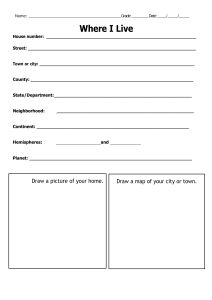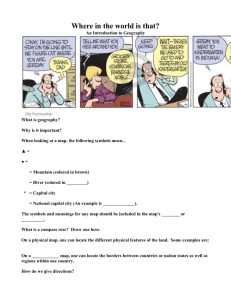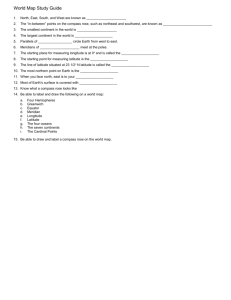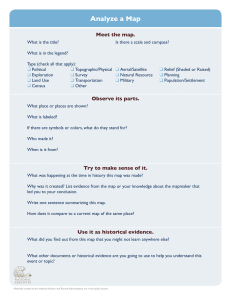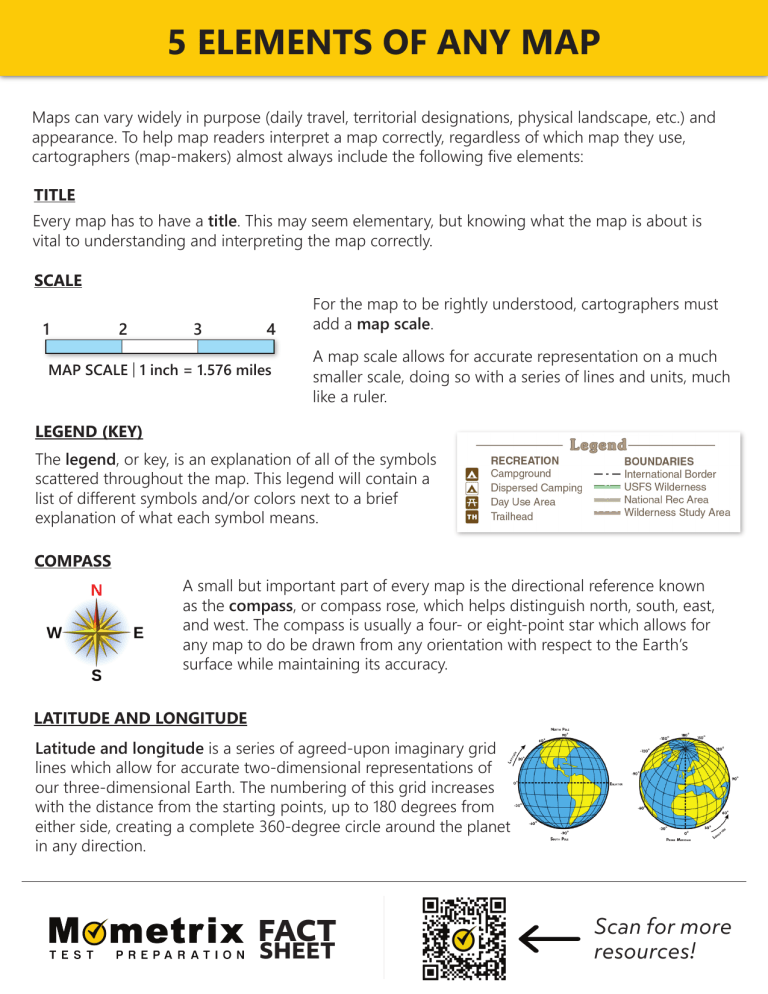
5 ELEMENTS OF ANY MAP Maps can vary widely in purpose (daily travel, territorial designations, physical landscape, etc.) and appearance. To help map readers interpret a map correctly, regardless of which map they use, cartographers (map-makers) almost always include the following five elements: TITLE Every map has to have a title. This may seem elementary, but knowing what the map is about is vital to understanding and interpreting the map correctly. SCALE 1 2 3 4 MAP SCALE | 1 inch = 1.576 miles For the map to be rightly understood, cartographers must add a map scale. A map scale allows for accurate representation on a much smaller scale, doing so with a series of lines and units, much like a ruler. LEGEND (KEY) The legend, or key, is an explanation of all of the symbols scattered throughout the map. This legend will contain a list of different symbols and/or colors next to a brief explanation of what each symbol means. COMPASS A small but important part of every map is the directional reference known as the compass, or compass rose, which helps distinguish north, south, east, and west. The compass is usually a four- or eight-point star which allows for any map to do be drawn from any orientation with respect to the Earth’s surface while maintaining its accuracy. LATITUDE AND LONGITUDE Latitude and longitude is a series of agreed-upon imaginary grid lines which allow for accurate two-dimensional representations of our three-dimensional Earth. The numbering of this grid increases with the distance from the starting points, up to 180 degrees from either side, creating a complete 360-degree circle around the planet in any direction. FACT SHEET Scan for more resources!
